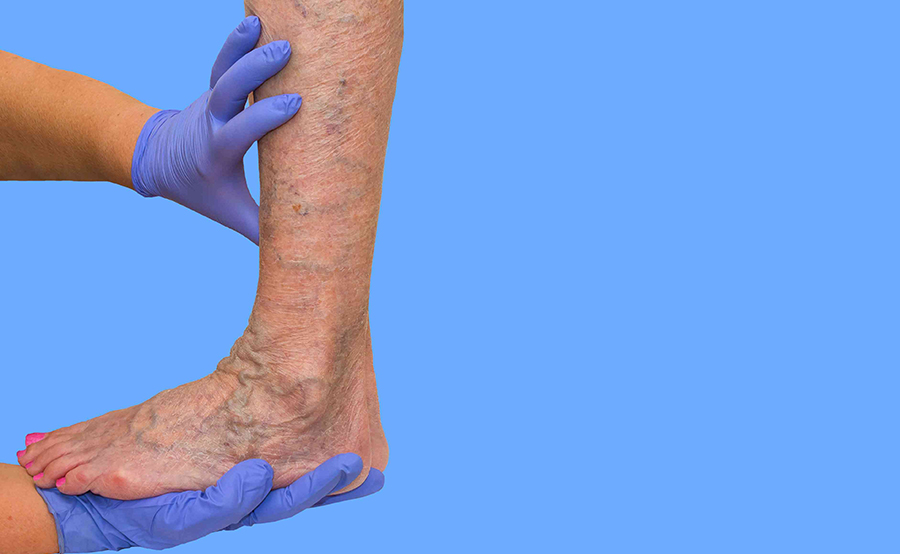At least six million individuals living in the United States are estimated to have been diagnosed with venous insufficiency. Data from the general public shows that while venous insufficiency might affect almost 40% of females, its incidence rate in men is nearly 17%. However, other than gender, the relevance of venous insufficiency may also vary from individual to individual based on factors like their diet and lifestyle. (1)
This article explores the main causes, symptoms, and risk factors for venous insufficiency, which will allow you to recognize your symptoms and get early medical intervention from a trained health expert.
What is Venous Insufficiency?
Venous insufficiency is a clinical condition characterized by edema in the legs, skin texture and color changes, and symptoms associated with venous hypertension. Individuals diagnosed with this condition often have a lower quality of life than healthy individuals. They may also miss more days of work and have lower overall productivity. The cause for most cases of venous insufficiency is the presence of incompetent valves; however, there may be other causes that will be discussed later.
According to the CEAP classification of Venous insufficiency, it may be characterized into different types based on the condition’s clinical appearance, cause, anatomy, and pathophysiology. (2) (3)
What are the Symptoms of Venous Insufficiency?
Individuals with venous insufficiency most commonly present with the following symptoms:
- Pitting Edema on the Legs
- Discomfort in the legs
- Frequent feelings of fatigue
- Itching on the skin of the legs
- Cramping of muscles
- Pain and Throbbing sensations in the body
The majority of these symptoms are reported to be improved by getting adequate rest and keeping the legs elevated. While the symptoms mentioned above are amongst the most common initial symptoms of the condition, with time, some people may also experience lesions on the skin, atrophy of the dermis, permanent hyperpigmentation, and ulcer formation.
The reason for hyperpigmentation during advanced stages of venous insufficiency is the movement of red blood cells out of the vessels and into the surrounding structures. When these cells get broken down, they cause hemosiderin to be released, which causes pigmentation in the skin. The skin thickening, which is reported as a sign of advanced disease, may also be called lipodermatosclerosis in medical terms. This is caused by the fibrosis of subcutaneous tissues, which ultimately presents itself with thickened skin. The main cause for ulcer formation in the advanced stages is the weakening of the dermis and disruption of microcirculation over time. (4)
How Does Venous Insufficiency Occur?
The heart’s function is to pump blood to all body parts, including the upper and lower extremities. While it is easier for the blood to reach the heart back from the upper extremities due to gravitational pull, the muscles in the legs have to work a little harder to get the blood back from the lower extremities. As the muscle contracts, the vessels get squeezed, allowing the blood to be pushed forwards in the direction of the heart. Another feature found in veins that helps them carry blood toward the heart is the one-way valves. These valves prevent the backflow of the blood as it moves against gravity to reach the heart from the legs.
When these valves get damaged, the blood may no longer be able to flow in one direction only and may start to flow back downwards. This will leads to its pooling up in the legs. Several factors may damage these valves, including increasing age, sitting for long periods, or combining the two. The blood pooling up in the legs keeps the veins distended for longer, leading to higher blood pressure. This elevated blood pressure for a long period may eventually lead to chronic venous insufficiency.
Another common cause of venous insufficiency is the formation of a blood clot in the leg veins. The veins most commonly associated with blood clotting include the deep veins of the legs – also known as Deep Vein Thrombosis. When Veinous insufficiency is caused by deep vein thrombosis, it is referred to as a post-thrombotic syndrome. Other causes of Veinous insufficiency may include pelvic tumours and vascular malformations.
Who Is At Risk for Venous Insufficiency?
Individuals who are at an increased risk for venous insufficiency include:
- Elderly individuals who are over the age of 60 years
- Individuals with a history of deep vein thrombosis
- Individuals with a lack of physical activity in their everyday life
- Females who use oral contraceptive pills
- Individuals with previous leg injuries
- Individuals who have been diagnosed with hypertension
How Is Venous Insufficiency Diagnosed?
The venous insufficiency diagnosis is made through several steps, including a detailed history, physical examination, reflux tests, and imaging techniques. The imaging technique commonly recommended for venous insufficiency includes the Duplex Ultrasonography, as this may help the doctor identify all the regions that have been affected, along with an indication of the possible cause. (5)
How Can Venous Insufficiency Be Treated?
A trained and experienced doctor treated Venous insufficiency based on individual patient factors. This may include addressing the reason that may be causing it and the severity of the symptoms. The treatment goals For venous insufficiency include:
- Relieving Pain and discomfort of the individuals
- Assessing the type of edema and treating it
- Stabilizing the appearance of the skin
- Facilitating the healing of ulcers
- Removal of varicose veins
Initially, conservative treatment is recommended, including weight management, compression therapy with compression stocking, calf muscle pumping exercises, and leg elevation. However, if these do not help manage the patient’s symptoms, they may be recommended a surgical approach. For example, where superficial saphenous veins are involved, they may be removed through surgery. However, this may not be possible for deeper veins, and the individual may be recommended long-term use of Compression stockings.
The Bottom Line
Venous Insufficiency is a beginning condition that can lead to devastating consequences if not managed early. This is why an individual at risk should consult a health professional at the earliest possibility. Dr. Jawad Malik DPM is a highly experienced and trained health expert who has been treating venous insufficiency and associated disorders for many years. If you or your loved one are experiencing any of the symptoms mentioned above, you may book a consultation with Dr. Jawad Malik today and start your journey towards a healthier tomorrow.
References:
- DePopas, E., & Brown, M. (2018). Varicose Veins and Lower Extremity Venous Insufficiency. Seminars in interventional radiology, 35(1), 56–61. https://doi.org/10.1055/s-0038-1636522
- Chamanga E. T. (2018). Understanding venous leg ulcers. British journal of community nursing, 23(Sup9), S6–S15. https://doi.org/10.12968/bjcn.2018.23.Sup9.S6
- Garcia, R., Labropoulos, N., Gasparis, A. P., & Elias, S. (2018). Present and future options for treatment of infrainguinal deep vein disease. Journal of vascular surgery. Venous and lymphatic disorders, 6(5), 664–671. https://doi.org/10.1016/j.jvsv.2018.01.010
- Mutlak, O., Aslam, M., & Standfield, N. J. (2019). Chronic venous insufficiency: a new concept to understand pathophysiology at the microvascular level – a pilot study. Perfusion, 34(1), 84–89. https://doi.org/10.1177/0267659118791682
- Butaney, M., Thirumavalavan, N., Hockenberry, M. S., Kirby, E. W., Pastuszak, A. W., & Lipshultz, L. I. (2018). Variability in penile duplex ultrasound international practice patterns, technique, and interpretation: an anonymous survey of ISSM members. International journal of impotence research, 30(5), 237–242. https://doi.org/10.1038/s41443-018-0061-3






